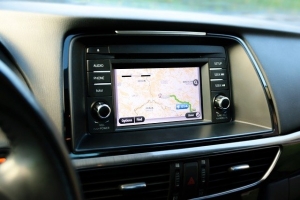The Car Safety Features That Make Driverless Cars Possible
Car technology is changing rapidly and it’s likely that the way we approach driving will be completely different in a couple of decades.
Electric vehicles are helping us to reduce our impact on the planet and cut back on air pollution. Driverless vehicle technology is moving fast too and it seems like eventually, we won’t need to do a thing, we can just sit back and relax while the car does all of the work. But how safe is this?

Image by Photo Mix from Pixabay
There have already been accidents involving driverless vehicles that have malfunctioned. In most of these cases, the drivers did not follow the safety guidelines that stated they must have their hands on the wheel. However, it still raises the question of how safe it is to put your fate in the hands of artificial intelligence software, which has the potential to fail.
There are some people out there that will tell you it’s never one hundred percent safe and we shouldn’t trust driverless cars because there is no way of making them safe. But that isn’t necessarily the case because a lot of the technology to make driverless cars safe already exists and it’s used in standard vehicles. The Toyota Safety Sense package, for example, is a collection of safety features designed to prevent accidents, many of which can be used in driverless vehicles too. Follow the link to learn more information about Toyota Safety Sense and how it is already being used in their cars. These are some of the common pieces of car safety tech that make driverless cars possible.
Automatic Emergency Braking Systems
This is a piece of tech that is already in every driverless car. The ability to recognize an obstruction and then react accordingly is the most important safety feature that a driverless car needs. Without this feature, they would get into an accident every time they hit the road. But some people still wonder whether they can really trust a computer to make this decision. The thing is, automatic emergency braking systems are already being used in standard vehicles because they react faster than a person can. The computer has the ability to process information faster than your brain, so it can apply the brake before you even recognize there is an issue.
Traffic Sign Recognition
When driverless cars are commonplace, it is likely that they will communicate with one another to ensure that all cars interact safely on the road. Things like road signs won’t really be necessary because the cars will regulate themselves. But what happens during the transition period when many cars are still controlled by people, even though there are driverless cars on the road? That’s where traffic sign recognition systems come in. These are already a common feature in modern cars and they are able to recognize the traffic signs and then relay the information, to make sure that you don’t miss anything. In a driverless vehicle, they can relay the information to the AI that is controlling the car, so it can follow the rules of the road.
Vehicle To Vehicle Communication
Vehicle to vehicle communication is perhaps the most important piece of tech for driverless cars and it already exists in some high-end cars. By communicating with one another, the cars are able to preempt what other drivers are going to do. If necessary, they use this information to put other safety systems into action.
Although people have fears about driverless cars and whether they are safe, we shouldn’t worry because most of the tech that makes widespread use safe already exists.


